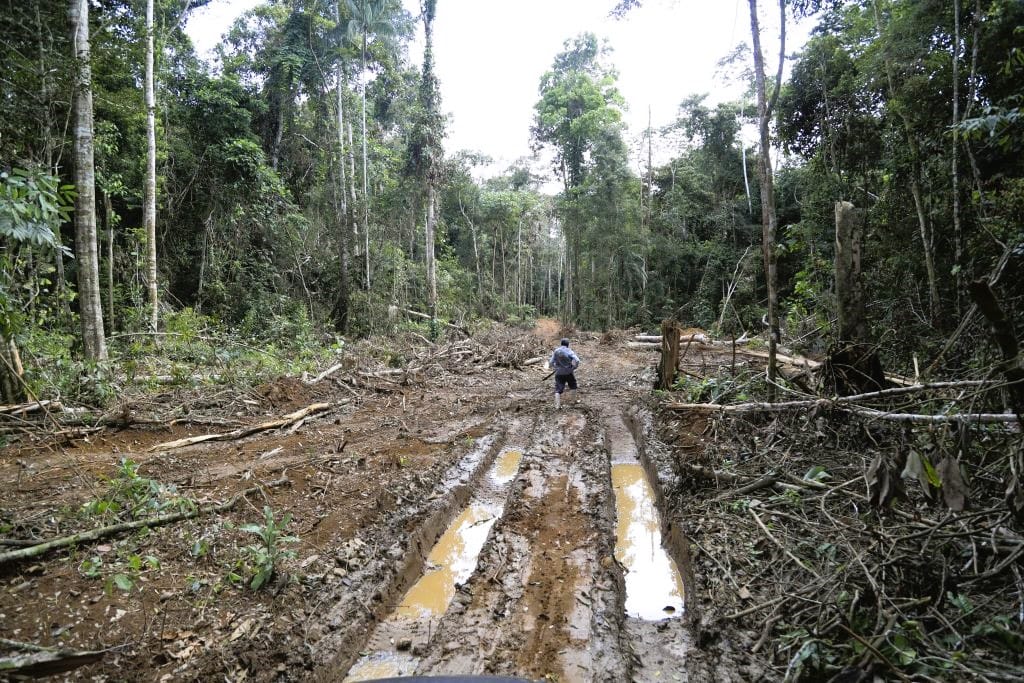Globalization means that access to food, medicines, electronics, home goods, fuel, and almost anything else we consume relies on strong international supply chains. And since the onset of COVID-19, the world has been facing a supply chain crisis. From manufacturing pressures and port backlogs to infrastructure woes, labor issues, and shipping container shortages, producers and logistics suppliers have struggled to maintain continuity.
In particular, health supply chains have come under immense pressure to deliver vaccines, personal protective equipment, ventilators, and oxygen while maintaining services and medicine deliveries for routine healthcare. At the same time, the irregularity of supply, the booming demand for certain goods, and the growth of large procurement contracts have increased opportunities for fraud and corruption. Transparency International says in normal times procurement is already a government’s top corruption risk, but due to the rushed and chaotic nature of emergency pandemic-related procurements, the risk for corruption is increased.
“Many countries allow exceptions to their procurement regulations in exceptional circumstances,” said DAI’s Eunice Heredia-Ortiz, Senior Global Practice Specialist for Public Financial Management. “This happened to a greater extent in response to the COVID-19 emergency—which allowed suppliers or government institutions to procure goods and services outside of a country’s rules and regulations.” She cites examples from Latin America where rushed procurement led to vaccines disappearing, mobile hospitals being completely ill-equipped, or governments having to pay for things twice because their procurement guidelines weren’t followed.

Increased funding to tackle the pandemic can also increase the risk of corruption, says Crown Agent’s Senior Health Supply Chain Consultant Ubasinachi Otuonye. Governments that received funding to distribute more vaccines might not have adequate risk management or supplier vetting processes in place. Plus, with more funders come more regulations. That’s a problem, said DAI’s Stephen Rahaim, Senior Global Practice Leader for Global Health Market Solutions, because instead of adhering to one set of national procurement guidelines, countries follow different guidelines for different funders, opening up opportunities for corruption in the gaps between the various requirements.
For international development practitioners, supporting governments to tackle corruption within supply chains is important because it means leaving more money available to fund national health budgets. We spoke to experts from DAI and Crown Agents about how governments can curb procurement corruption in their health supply chains.
1. Apply a single set of procurement guidelines that follow international standards
Rahaim suggests working with both governments and donors to develop a single set of procurement guidelines that donors can accept and trust as rigorous. “We need to help countries review and update policies and procurement regulations to which all donors can align,” he said. Donor compliance regulations often mean that countries must set up parallel supply chains to deliver goods and services, rather than relying on their own national health supply chain. However, donors increasingly are seeking to strengthen national supply chains rather than insisting on parallel delivery systems. This is true in countries such as Nigeria, Tanzania, and Zambia that receive funds from the President’s Emergency Plan for AIDS Relief (PEPFAR). This shift in the donor mindset creates an ideal moment for harmonizing national guidelines with donor compliance requirements, said Rahaim.
Heredia-Ortiz said the key to ensuring that donor and national regulations are aligned is to follow international standards and build worker capacity. “International standards improve data management, system interoperability, and efficiency,” she said.

2. Strengthen supply chain structures and processes
Oversight and coordination of national supply chains should sit with governments to ensure sustainability and national ownership, the experts agreed. “Government leadership, however, must be based on best procurement practices and not political motives, maintaining transparency of supply chain costs and expenditure throughout,” said Dirk Van Wyke, Crown Agents’ Team Lead for the Saving Lives Programme in Sierra Leone.
In addition, Otuonye said, “Governance structures need to make financial processes as transparent and traceable as possible. Mechanisms such as fiduciary risk assessments and the application of public financial management systems can [help].” For example, in Sierra Leone, Crown Agents provides regular fiduciary management oversight and technical assistance to the Ministry of Health and Sanitation through hands-on budgetary support, operational oversight on procurement and inventory management.
Heredia-Ortiz emphasized the need for a holistic approach that encompasses an improved legal and regulatory framework, healthy private sector participation, and capacity building throughout the supply chain. “Some countries have effective rules and regulations, but poor business processes,” she said. “That’s not enough and doesn’t make for a strong sustainable supply chain system. Strong supply chains link people, processes, and technology together. We need to build people’s capacity, set up strong processes and legal frameworks, and then bring in technology to make everything interoperable.”

3. Improve data architecture
“Better data is key,” Heredia-Ortiz continued, highlighting a project where DAI helped standardize Guatemala’s procurement catalog and supplier management system. The new system helped highlight irregularities, standardize procurement requests, and track suppliers across 11 ministries, providing greater transparency.
Data architecture is also important to support sound financial processes, said Otuonye. “With increased funding to tackle the pandemic, countries realize that they need accurate data to strengthen their quality assurance processes. In some countries, health supply chain budgets are not properly itemized as part of national health budgets, so expenditure can’t be tracked. Increasing data visibility and harmonizing existing data sources for national forecasting, procurement, supply planning, and budgeting enable governments and donors to assess the impact of expenditure and track its usage.” With better data and data architecture to track and monitor money and goods governments increase transparency and ensure money isn’t wasted.
4. Build strong public-private partnerships
“Private sector partners are an essential component in health supply chains as governments don’t have the capacity to fulfill the entirety of their health systems’ requirements. To decrease corruption, governments need to continue working toward stronger enabling environments for private sector partners,” said Van Wyke.
Developing central competition, contracting, coordination, and oversight mechanisms to reduce corruption and fostering private sector participation will eventually lead to a greater number of more competent private actors competing to perform activities at different stages of the supply chain. This enhanced competition results in more providers, more choice, and ultimately lower prices, giving the government alternatives when facing financial difficulties. “Using the private sector is a low-risk strategy,” affirmed Rahaim. “If one supplier fails, the government can find others if investments are made to develop an ecosystem of providers.”
Ultimately, stronger health supply chains lead to stronger health systems and better health for all. Improving procurement regulations, building more effective structures, developing strong data architecture, and expanding the network of competent partners will equip us to deal more effectively with health emergencies.






